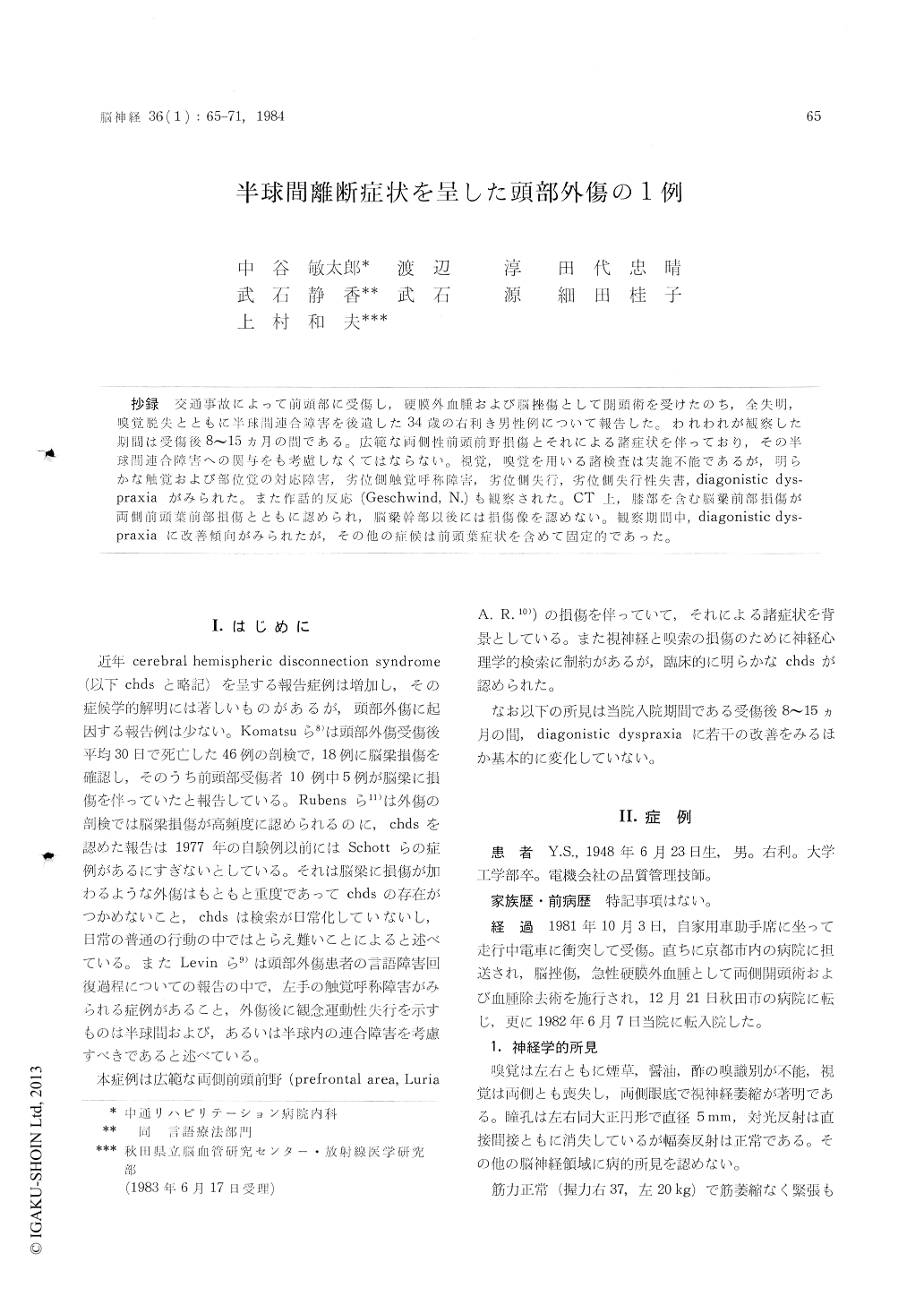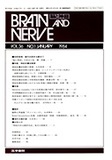Japanese
English
- 有料閲覧
- Abstract 文献概要
- 1ページ目 Look Inside
抄録 交通事故によって前頭部に受傷し,硬膜外血腫および脳挫傷として開頭術を受けたのち,全失明,嗅覚脱失とともに半球間連合障害を後遺した34歳の右利き男性例について報告した。われわれが観察した期間は受傷後8〜15カ月の間である。広範な両側性前頭前野損傷とそれによる諸症状を伴っており,その半球間連合障害への関与をも考慮しなくてはならない。視覚,嗅覚を用いる諸検査は実施不能であるが,明らかな触覚および部位覚の対応障害,劣位側触覚呼称障害,劣位側失行,劣位側失行性失書,diagonistic dys—praxiaがみられた。また作話的反応(Geschwind, N.)も観察された。 CT上,膝部を含む脳梁前部損傷が両側前頭葉前部損傷とともに認められ,脳梁幹部以後には損傷像を認めない。観察期間中, diagonistic dys—praxiaに改善傾向がみられたが,その他の症候は前頭葉症状を含めて固定的であった。
Rubens, A. B. et al (1977) stated as follows ;gross and microscopic lesions of the corpus callo-sum and neighboring structures were seen com-monly in severe closed head injury, neverthless only one case before they reported there was in which the callosal disconnection syndrome was observed in literatures.
We report a case demonstrating the callosal disconnection syndrome after severe frontal head injury. He was a 34-years old right-handed male. He was injured by traffic accident at Oct. 1981, and operated for epidural hematoma and bilateral frontal contusions. His bilateral optic nerve and olfactory tract were injured at same time, and so complete blindness and anosmia have occured. Therefor we could not test with the aid of his visual or olfactory functions, but by some somes-thetic function tests we could find severe tactile interhemispheric transfer disturbance, unilateral left-sided tactile anomia, left-sided apraxia and left-sided apraxic agraphia. Moreover diagonistic dyspraxia and confabulatory response have been observed also.
CT showed the marked low-density lesions in the antero-basal aspects of the bilateral frontal lobes. Tissue destruction of the corpus callosum extendes from the rostrum to the genu of the corpus callosum, but the truncus and splenium of that are seemed to be structurally normal. Cereb-ral atrophy is prominent in the bilateral frontal lobes and the anterior aspects of the temporal lobes.
These coexisting extracallosal hemispheric lesi-ons in the brain may have modified the effects of callosal pathology. And we must be concerned about that the structural local damage of the brain displaying on the CT may be possible to dissociate from functional local damage of the brain.
These findings with the exception of diagonistic dyspraxia which is improving gradually, have been consistently between 8-15 months after the accident of head trauma.

Copyright © 1984, Igaku-Shoin Ltd. All rights reserved.


